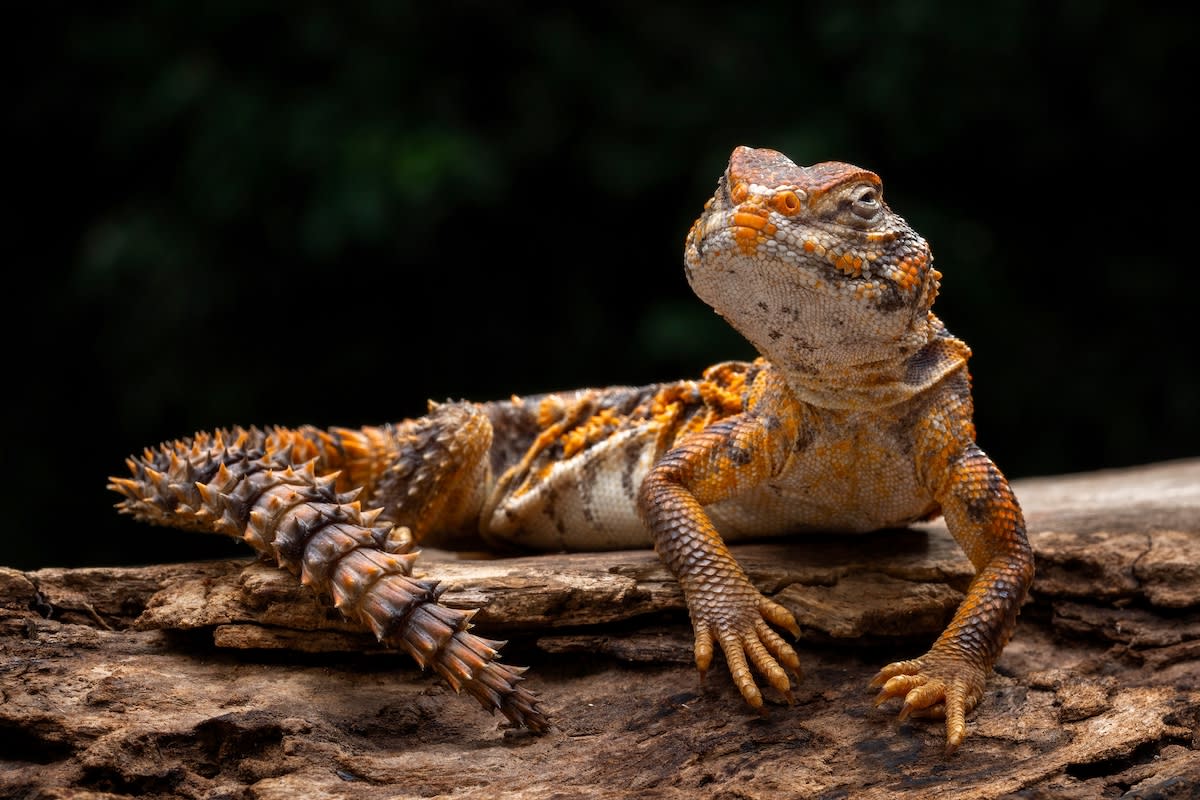Woman DIYs Elaborate Enclosure for Lizard Out of Styrofoam and It's Jaw-Dropping

When you choose to take charge of the well-being of an animal, that also means becoming responsible for giving them the best lifestyle you are capable of. If you have a dog, you have to walk it. If you have a cat, you must provide it with a scratching post or pad, a bed, and a litter box. And birds were not meant to spend twenty-four hours a day in a tiny cage.
This woman wants to make a more natural-looking habitat for her uromastyx lizard—out of styrofoam!
View the original article to see embedded media.
By the time she’s done carving, sealing, and painting this habitat backdrop for her lizard, it looks worthy of a set for a movie, or perhaps a ride at an amusement park. And though plenty of commenters were suspicious of both the safety and the longevity of her styrofoam habitat, it remains a popular option for many lizard-keepers.
Related: Video of Lizard Enjoying His Bath Is So Captivating We Can't Even
Building a Styrofoam Habitat For Your Lizard
Adding a natural-looking backdrop to your spiny-tailed lizard’s habitat is a good way to enrich the animal’s life. Even just a painted backdrop will help their emotional state, but if you want to go all out, there are plenty of guides online on how to install a safe and realistic-looking styrofoam stonescape that resembles its rocky, native desert habitat.
To make this structure, the woman began with some thick styrofoam boards that she broke into pieces and stacked to make rocky outcroppings. She secured these boards together and made them sturdier by inserting wooden dowels, much like one might with cake layers.
After that, she carved the styrofoam boards to look more like rocks, then sealed and secured them with Great Stuff spray foam for gaps and cracks.
After everything was the shape she wanted it to be, she sealed the structure with dry lock, then painted it with simple, non-toxic acrylic paint. Along with the last layer of paint she mixed in some excavator clay to give it a say finish.
The lizard seems to love the result.
Before you embark in a project like this, make sure that all the materials you are using are safe of your pet.
Is a Spiny-Tailed Lizard Right For You?
Uromastyx, also called agamids or spiny-tailed lizards, are a large group of species who live in rocky areas of Africa, the Near East and Asia. They are a less-common option for lizard pets, and are known for being inquisitive and easygoing. Unlike other kinds of pet lizards, who subsist mainly on crickets, Spiny-Tailed Lizards are herbivores, whose diet subsists mainly of different kinds of dark, leafy greens (think escarole, endive, mustard greens, dandelion greens, etc.) and legumes like lentils.
Since these lizards are desert creatures, they need to be kept in non-humid environments, and have enclosures furnished with rocks and heat lamps for basking, as well as enough substrate (read: safe, pet-friendly sand) to burrow in.
In the wild, these animals may dig long tunnels, but most captive lizards are not given that opportunity. As burrowing creatures, the lizard is a shy pet, which should be given places in its enclosure to hide away, or it may become stressed and unhealthy.
Spiny-tailed lizards also need calcium and vitamin D supplements, as well as regular exposure to UVB light from a sunlamp to maintain optimal health an prevent bone disease. Though drinking water is not a natural part of the animal’s diet, they must regularly be fed enough fresh leafy greens to get adequate hydration.
Looking for more PetHelpful updates? Follow us on YouTube for more entertaining videos.
Or, share your own adorable pet by submitting a video, and sign up for our newsletter for the latest pet updates and tips.

